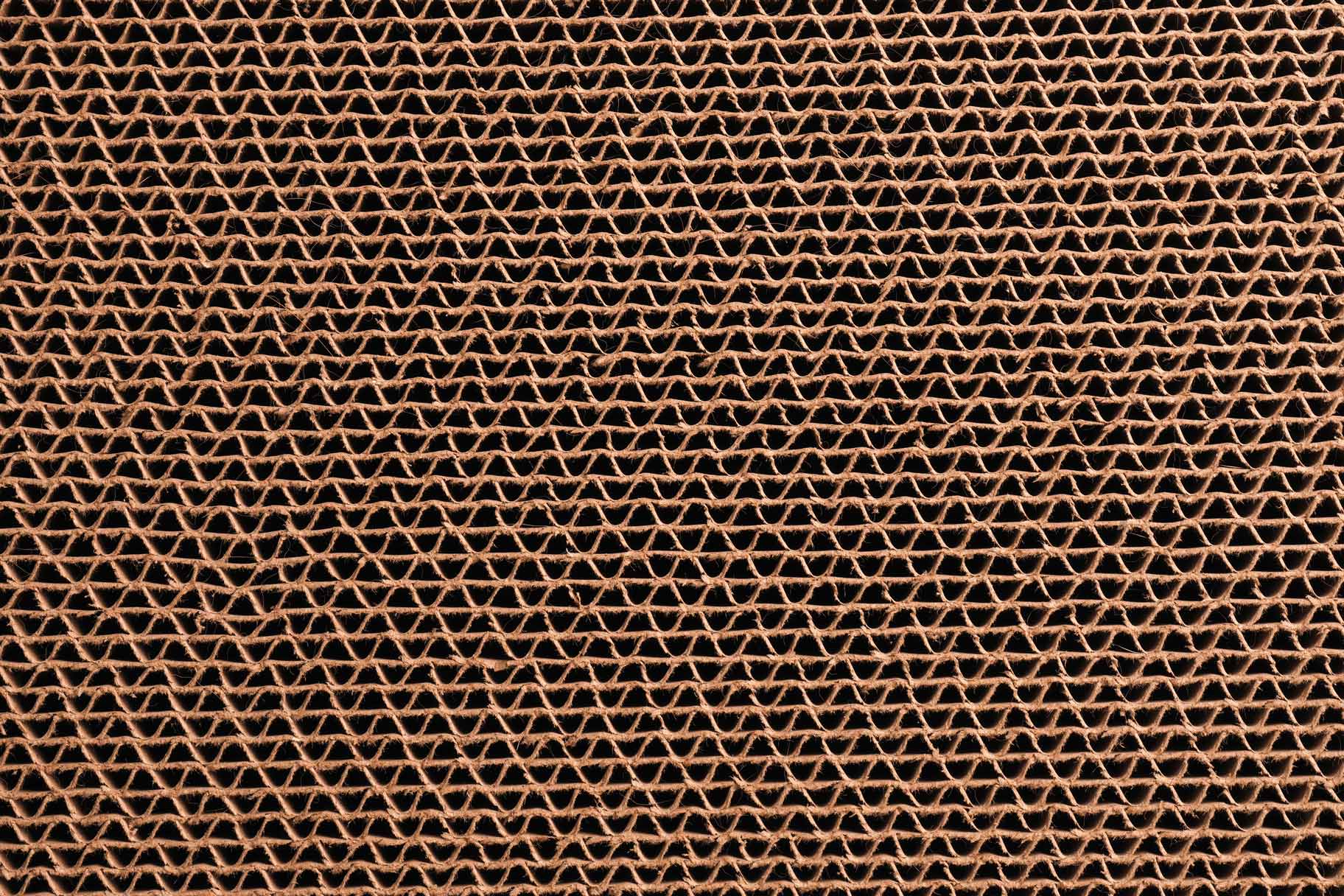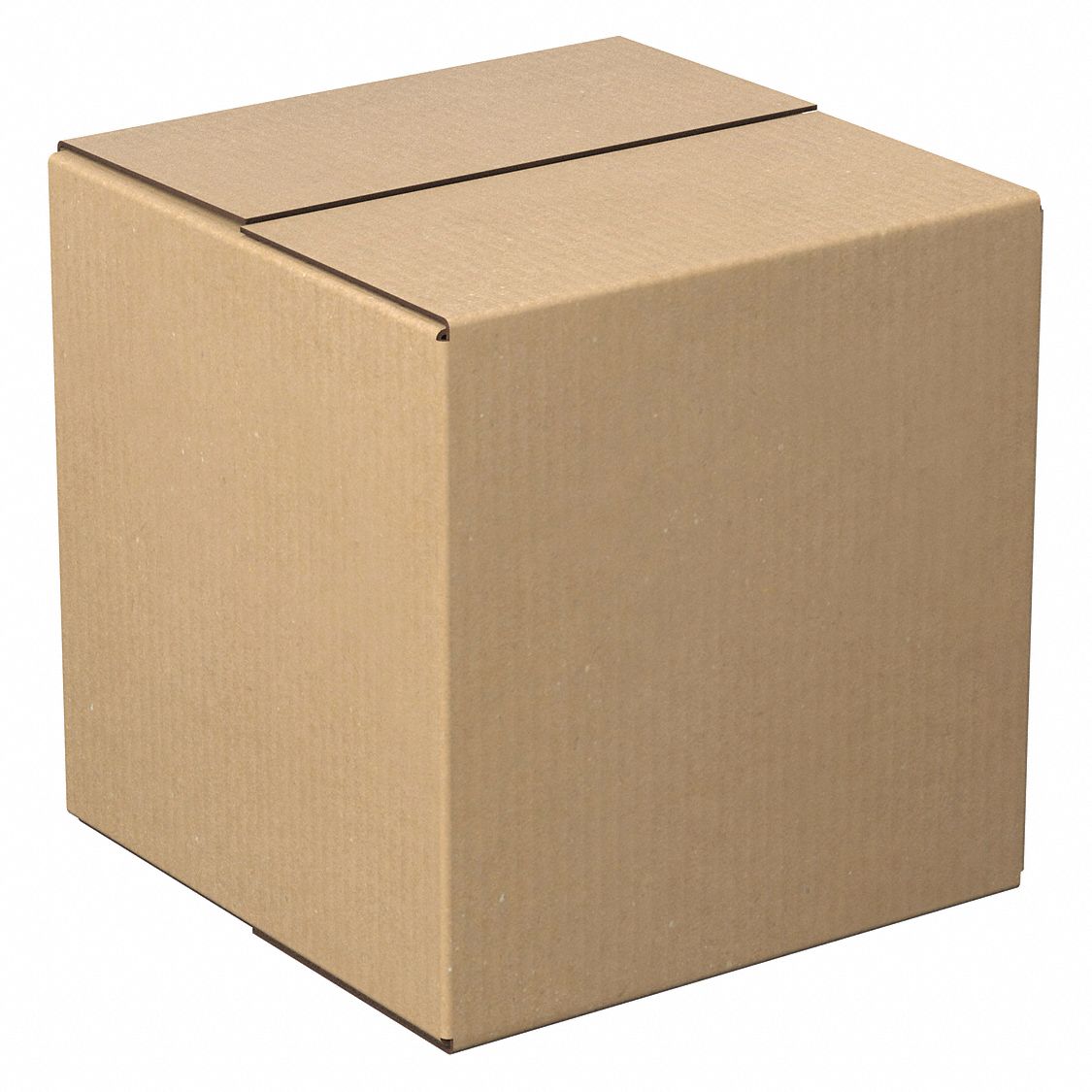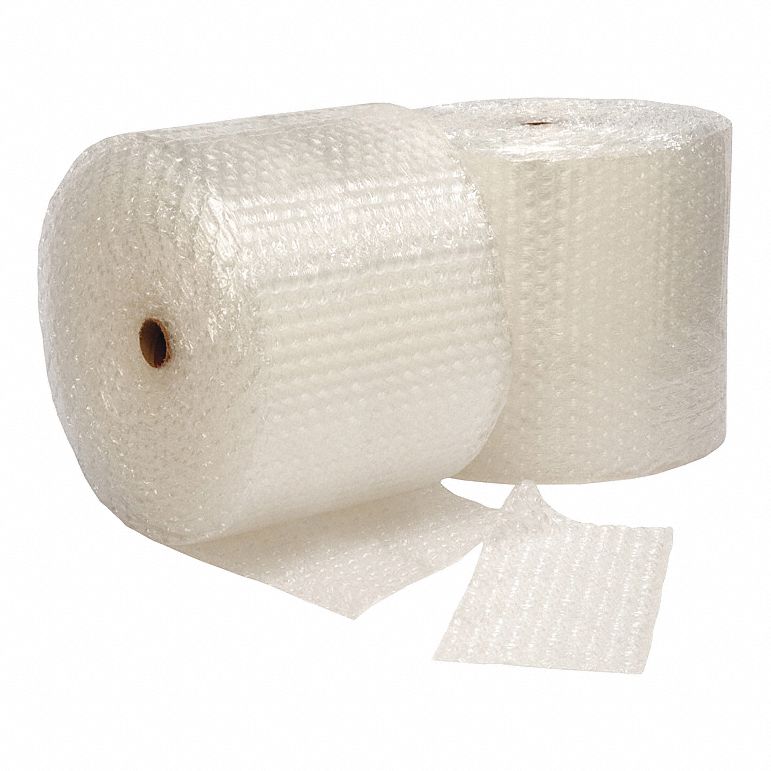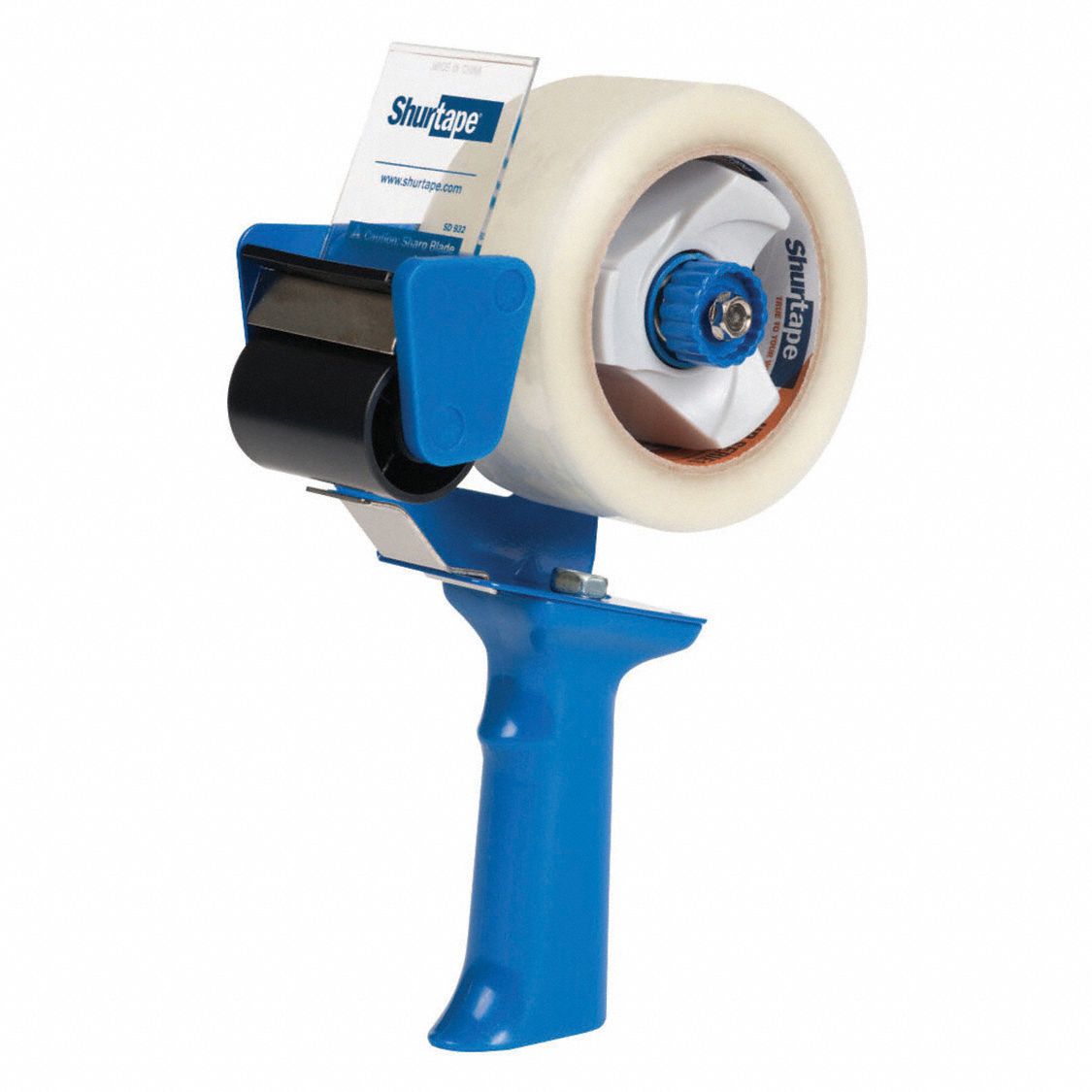

How to Choose Shipping Box Size, Shape and Strength
By Grainger Editorial Staff 7/22/21
Whether you're looking to ship something smaller than your hand or so big it needs to be moved in a truck, picking the right box is important. With various shapes, sizes and strengths, it can be challenging to know where to begin. This guide will help you choose the right shipping box to fit your business needs.
Shipping Box Carriers
From shipping orders to external customers to meeting internal needs like supply transfers and storage, there are many reasons a business may require shipping boxes. Not only do shipping services in the U.S. charge based on the size and weight of the box being shipped, they also have size and weight restrictions. Check to make sure your box falls below the maximum specifications or your package may have to travel with a freight carrier.
Shipping Box Sizes and Shapes
Typical standard shipping boxes are made of corrugated cardboard. You can choose from an assortment of shapes and box strengths. Depending on the size and weight of your product, you may need a more durable box.
Below are the most common box shapes and strengths. However, there are many more types of boxes to choose from.
Box Sizes
Determining the size of your shipping box is the first place to look. Boxes can come in traditional rectangular shapes and cubes, or elongated shapes and sizes for specialized uses.
Cube boxes feature the same length on all edges and have the same square box shape on all sides.
Multi-height boxes have a design that allows you to choose between various heights while keeping a fixed width and depth. Depending on the box, you could have two, three or more options for adjustable box heights.
Long boxes have a longer length compared to their width and height. This allows loading elongated items that can ship on their side or lying down flat.
Tall boxes feature a smaller length and width compared to a taller height. That makes them best for shipping tall items that can’t be folded down and need to stay upright while in transit.
Telescopic boxes allow for shipping long items that may not fit into a single box. They fit together and work well for shipping large and tall items.
Side-loading boxes are often wide and thin with an opening on the narrow side to load or unload items with a shape similar to a framed photo or poster, among other uses.
Box Strengths
The strength of shipping boxes is generally measured using edge crush test (ECT) for stacking strength or the Mullen Test for bursting weight. One of these two measures will be printed on any corrugated shipping box as part of its box manufacturer's certificate (BMC), a circular stamp that includes the manufacturer's name and other technical information.
The two most commonly used box strengths for shipping are:
- 32 ECT: This type of box can stand up to a 32-pounds per square inch vertical compression and is common when stacking lighter weight shipments.
- 200#: For somewhat heavy-duty shipping, 200# boxes are popular options, and generally support a bursting strength of about 50 percent higher than 32 ECT boxes.
Use the chart below to select the box type based on the weight of your shipment using the UPS and Fiber Box Handbook strength guidelines. If you need a box that holds more than 200 pounds of pressure, stronger, heavy-duty boxes are available.
| Box Type | Fiber Box Handbook | UPS Guidelines |
|---|---|---|
|
32 ECT Single Wall |
65 lb |
30 lb |
|
200# Single Wall |
65 lb |
40 lb |
|
44 ECT Single Wall |
95 lb |
50 lb |
|
48 ECT Double Wall |
100 lb |
60 lb |
|
51 ECT Double Wall |
120 lb |
80 lb |
|
71 ECT Double Wall |
160 lb |
|
|
90 ECT Triple Wall |
280 lb |
|
Digging Deeper: Burst Strength (Mullen) vs. ECT
Why are there two different box strength ratings? Storage boxes and shipping boxes are subject to many different kinds of use and abuse, which can cause them to fail in different ways. One box might be punctured by a collision in a sorting facility, while another might collapse in a warehouse under a steady load. The characteristics that help a box resist one kind of damage may do little to prevent another, so assessing and comparing overall durability a complex task.
A corrugated box's burst strength is a measure of durability assessed using the Mullen test, which involves slowly applying hydraulic pressure to the corrugated board's face until its linerboard component ruptures. One common burst strength rating for corrugated boxes is 200#, which is given to material that can withstand at least 200 pounds per square inch under test conditions before it ruptures.
According to "Cartons, Crates and Corrugated Board: Handbook of Paper and Wood Packaging Technology" (Diana Twede, Susan E. M. Selke), burst strength is useful for predicting how a box will withstand the kind of forces that it experiences when it's dropped, jostled, jammed or otherwise subjected to rough treatment, as often happens in high-speed sorting facilities, where boxes—many of which contain inadequately secured loads—are expected to drop or slam into each other. For this reason, some small-package shippers prefer to use shipping boxes that have been rated according to the Mullen test, which demonstrates resistance to this kind of stress.
The edge crush test (ECT) is a way of predicting the compression strength of a corrugated box. According to "The Handbook of Package Engineering, Third Edition" (Joseph F. Hanlon, Robert J. Kelsey, Hallie Forcinio), the ECT was developed to be a more direct indicator of a box's ability to hold a static load over a period of time. This ability is also called the stacking strength of the corrugated box.
Roughly speaking, the ECT can be thought of as measuring how stiff the board is when the box is standing up in the intended position. The testing procedure involves standing a piece of corrugated board on its edge so that its flutes are upright (vertical), and then measuring how much downward force it takes to crush the board.
When boxes are palletized, they are likely to receive much less of the rough treatment that causes box walls to burst, but their stacking strength is still very important. According to Twede and Selke, many shippers of palletized freight prefer to choose boxes based on ECT ratings, because this more directly describes stacking strength.
Shipping Boxes Are an Important Part of Product Delivery
With the right boxes ready to go, your business can successfully meet its shipping and packaging needs, while providing safe and secure delivery. Taking the time to understand shipping box sizes and shapes will help you reach the best result for your customers—and that's an ideal outcome for any business.
What Is Corrugated Board?
A corrugated box begins with corrugated board, which is a composite material made from two or more sheets of paperboard. The sheet that forms the center of a piece of corrugated board is called the medium: it's given a wavelike, corrugated shape and then glued between flat sheets called the liner or linerboard. The waves of the medium are called its flutes.
When one corrugating medium is sandwiched between two linerboards, this makes a piece of single-wall board, which is the standard material for corrugated boxes.
Double-wall board combines two corrugating mediums and three linerboards and makes a heavy duty box typically used for heavier items such as large appliances.
Triple-wall board combines three mediums and four linerboards. According to "The Illustrated Glossary of Packaging Terminoloy" by Walter Soroka, triple-wall board is durable enough to substitute for lumber in many packaging applications such as bulk bins and machinery packaging.
Single-face corrugated board is made by gluing the corrugating medium to a single linerboard and is typically used as a cushioning material for objects in other containers.
Types of Corrugated Shipping Box Closure: RSC, FOL, HSC
The most widely used style of corrugated shipping box is called a regular slotted container (RSC). On an RSC-style box, all the closure flaps are the same length—one-half of the box width. This means that the outer pair of flaps will meet in the middle when closed, while the other set of flaps—the inner flaps—will not. The RSC is a relatively inexpensive box style in part because there is very little scrap when the box is made.
On a full overlap slotted container (FOL), all the closure flaps are longer—as long as the full width of the box. This means that the outer flaps will overlap each other almost completely, creating extra layers of corrugated board that result in a strong, cushioned box. The overlapping flaps also help give compression strength if the box is on its side.
A half slotted container (HSC) is like an RSC, but with one flapless, "open" side.
RSCs, FOLs and HSCs are all slotted containers, but there are other less common box forms, including self-erecting boxes, Bliss boxes, telescope boxes and folders.
Frequently Asked Questions
Q: What's the difference between burst strength and ECT for a corrugated box?
A: Burst strength is a measure of how much pressure it takes to push through the linerboard of a piece of corrugated board, and it is closely related to the tensile strength of the linerboard. Edge crush test (ECT) is a measure of how much pressure it takes to crush the corrugated board by pressing downward on it while it's standing on its edge. ECT is related to the overall stiffness of the linerboards and the corrugating medium that together make up a piece of corrugated board, and it was designed as a better indicator of a box's stacking strength. Corrugated shipping boxes are rated for burst strength or ECT, and the rating is part of the box manufacturer's certificate (BMC) stamped on the box.
Q: What's the difference between 200# and 32 ECT shipping boxes?
A: If you compare the box manufacturer's certificate (BMC) on a box made from 200# board with the BMC on a box made from 32 ECT board, you'll see the same gross weight limit: 65 pounds. However, 32 ECT board may be created with lighter-weight material that has been engineered to have crush resistance without necessarily having the tensile strength that gives 200# board its burst resistance. For this reason, 200# board is usually heavier than 32 ECT board, and 200# board boxes are thought to be better suited to the battering that small packages can receive during shipping.
UPS guidelines suggest that 200#-rated boxes can handle heavier loads (40 pounds) than 32-ECT-rated boxes (30 pounds).
Q: What is a flute in a corrugated box?
A: The waves or corrugations of the medium are called its flutes. Letters are used to designate flute size, with C-flute board being by far the most common material for corrugated shipping boxes. B-flute is a smaller flute size that is sometimes used when high compression strength is not required (for transporting canned goods, for example), while A-flute is a larger size that can be used for cushioning, especially in the form of single-face board. In double-wall and triple-wall corrugated board, corrugating mediums of different flute sizes are often combined in order to take advantage of their different benefits.
Q: How are the dimensions of a corrugated box normally expressed?
A: Box dimensions are given in this order: Length (the longest side of the opening) x Width (the shorter side of the opening) x Depth (the dimension perpendicular to the opening. Get more guidance on types of box by size.
Q: What are corrugated boxes made of?
A: Corrugated boxes are made of corrugated board, a composite material with paperboard layers that are themselves made of different materials. In single-wall corrugated board, the central corrugated layer (called the medium) is sandwiched between two pieces of linerboard. The medium is often made from what paper manufacturers call a semichemical stock, while the linerboard is typically made using the kraft process, which produces a stronger board. Both the medium and the linerboard can contain varying proportions of recycled content.
Q: What is an RSC box?
A: A regular slotted container or RSC is a corrugated box that has closure flaps that are all the same length—one-half as long as the box's width, which is the dimension of the shorter side of the opening. This is the most popular type of shipping box.
Q: What is an FOL box?
A: A full overlap slotted container (FOL) is similar to the standard shipping box (RSC), but it has longer flaps that have substantially more overlap when closed, creating a more stable, cushioned package. The flaps on an FOL are as long as the width of the box.
Q: What is the best way to stack boxes on a pallet?
A: There's no single best way to palletize boxes, because there's a tradeoff between stacking strength and stability. If the boxes are stacked in perfectly aligned columns, this maximizes their stacking strength—but an interlocking pattern is often preferred for stability, especially when loads are not stretch-wrapped or stabilized, according to Cartons, Crates and Corrugated Board: Handbook of Paper and Wood Packaging Technology (Twede and Selke).
Q: Apart from its composition, what factors can affect the stacking strength of a box?
A: According to the Handbook of Package Engineering, Third Edition (Hanlon, Kelsey and Forcinio), corrugated boxes lose stacking strength as relative humidity increases, and as the duration of the load lengthens. A box that is loaded for a year can lose half its stacking strength, for example..
Q: What is a standard size shipping box?
A: There is no exact requirement for the standard size shipping box. Looking at your own business and personal packages, you’re likely to see boxes with a wide range of shapes and sizes. You can find a box to meet nearly any shipping box need.
Q: How do I know what size box I need?
A: Measure your product to ensure you don’t pick a box that’s too small or too big, taking into account added space for padding. You may want to test multiple box sizes to find the right fit for your product. Also, be mindful of major U.S. shipping providers' guidelines so you don't pick a box that's outside of maximum box size requirements.
Q: What is the cheapest size box to ship?
A: The cheapest size box to ship varies by the shipping company and method you choose. Generally, the smaller and lighter weight boxes are the cheapest size box to ship. This is an important reason to test multiple sizes and various options once padding is added. Choosing the minimum required size could help your business save significantly on both box and shipping costs.
The information contained in this article is intended for general information purposes only and is based on information available as of the initial date of publication. No representation is made that the information or references are complete or remain current. This article is not a substitute for review of current applicable government regulations, industry standards, or other standards specific to your business and/or activities and should not be construed as legal advice or opinion. Readers with specific questions should refer to the applicable standards or consult with an attorney.










